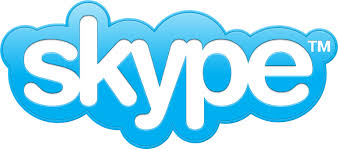What is Skype?
Skype is a voice over Internet protocol (VoIP) application that lets users make free phone calls between Skype-equipped computers and inexpensive calls between Skype computers and landline or cell phones. Skype functions on a “peer to peer” (P2P) model rather than as a centralized application, and it offers features such as voicemail, call forwarding, conference calling, and video chat. In most circumstances, Skype provides access to voice and video communication for a fraction of what other options cost. It allows more frequent contact between colleagues, collaborators, and friends and permits connections with those not likely to be in touch through conventional phone system.
- Skype increases the effectiveness of online and traditional learning by helping students feel more connected and giving them additional learningresources based on learning style
- Students can interact with one another and the instructor via Skype or view each other live (if all attendees have a web cam)
- Faculty can design and prepare segments or whole lectures, demonstrations, or instructions for students in all types of classroom settings as a complement or substitute for traditional lectures
- Expensive equipment is not needed; only a webcam (if desired), internet connection, and microphone are needed
- On the student end, they only need an internet connection, web browser, and a microphone. Webcam is optional
- Presentations can be accessed live
- Short learning curve for faculty and very easy learning curve for students
Skype Explained
Classroom Uses
- Conferencing tool with students.
- Shadowing a professional as she/he works.
- Talking with people in labs, research centers, art studios, museums, “on location”.
- Watching an expert do something or explain something (Your neighbor who does composting can explain it to the class and show her compost.)
- Class to class collaborative videoconferencing
- Conversing in the second language to people from that language area.
- Watching an event like a school play, a poetry jam, science demonstration (egg drop), etc.
- Another teacher from another district can help you co-teach your class since that teacher is an expert in the topic your students are doing.
- Mentoring situation (A master teacher can watch your class and then give suggestions).
- Screen sharing allows the users to see what is on your screen and vice versa.
- Classroom recording of lectures, demonstrations, updates, or instructions for review outside the classroom.
- Students with can listen to audio instructions rather than completely relying on reading.
- Students can listen to instructions or demos as many times as needed helping those with learning challenges being able to use repetition.
- Listening to lectures live if students cannot make it to class.
- Students in foreign language or medical terminology classes can listen to the correct enunciation of words.
- Instructors can hold face-to-face office hours with students.
- If students cannot come to class, course information is readily available to keep current on material if allowed to use video streaming at their convenience.
- Students can develop bonds with each other and the instructor when using web conferencing. Research proves that students who feel connected have a greater chance of success in a class.
Library Skype Service

Madison College Libraries provides Skype reference.
News and Research
This feed is created from general search terms on the topic using library databases. Some articles may not apply. If you are accessing from home you may have to enter in your College username and password.
